6 Endangered Species on Isla Contoy: A Call to Action for Conservation
Although Contoy is a government-protected area, it is home to endangered species. Read on and learn about the 6 endangered species that inhabit Isla...
7 min read
 Giovanna Ricalde
:
Feb 16, 2023 1:30:00 PM
Giovanna Ricalde
:
Feb 16, 2023 1:30:00 PM

Did you know that Isla Contoy was declared a sea turtle sanctuary? Read on and learn all about Contoy's sea turtles.
Sea turtles are one of the most beloved animals in the world, especially by sea lovers. There are eight species that, unfortunately, are in danger of extinction. Join us to learn about them and their interaction with our favorite island, Isla Contoy.
Table of contents:
Sea turtles (Chelonioidea) are reptiles that live in all oceans except the polar regions and are characterized by large migrations in search of food or to reproduce, reaching speeds at sea between 16 km/h and 22 km/h.
Unlike land turtles, sea turtles have a streamlined, lightweight shell attached to the sides to protect them from temperature changes; they have legs with membranes to facilitate swimming.
Sea turtle fossils that are more than 180 million years old have been found, proving that they have not changed that much compared to their ancestors. The biggest change between modern and ancient turtles is that they replaced their toothed snout with the sharp-edged jaw they have today. Today's sea turtles can live up to 100 years, depending on their species.
🐢 Its scientific name, Caretta, means head. This is because, compared to other turtles, the loggerhead has a large triangular head to its body. Its carapace is wide and measures between 76 cm and 122 cm.
It has a reddish-brown color on its back. The belly varies from yellow to orange.
📌 It inhabits the Atlantic, Indian, Pacific and Mediterranean oceans.
🍔 This turtle is carnivorous. It has a jaw that helps it crush mollusks and crabs. It also eats jellyfish and other invertebrates.
🐣 The female returns to the beach where she was born and lays an average of 70 eggs. Young hatchlings are brown or black and weigh just 20 g.
⚠️ Considered as a vulnerable species by the IUCN
🐢 Adult specimens can reach up to 166 cm in length and weigh up to 300 kg. It has a short, rounded snout, an upper jaw with a slightly denticulate edge, and a strong and serrated lower jaw.
🌈 The name green turtle comes from the color of its fat and not from its shell. In reality, their shells are dark brown or olive green in young specimens and brown with spots in adults.
📌 The distribution of Chelonia mydas extends throughout the tropical and subtropical oceans of the world.
🍔 The hatchlings are carnivorous and feed on mini-organisms in the water. When they reach adulthood, they become herbivorous, feeding only on algae.
🐣 They migrate long distances to the beaches where they were born and mate every 2 to 4 years. Females lay between 100 and 200 eggs, which take 45 to 75 days to hatch. Upon hatching, the hatchlings instinctively head out to sea.
⚠️ Considered endangered by the IUCN and CITES. It is illegal in most parts of the world to capture or kill them.
🐢 This species measures 60 to 70 cm and weighs up to 40 kg. Its carapace is round, and its head is subtriangular.
🌈 Its carapace is dark green, and its underside is yellow.
📌 Its location is concentrated in the eastern Pacific, but they have been found in most of the tropical seas.
🍔 They are omnivorous. They feed on crabs, shrimps, lobsters, small fish, and invertebrates.
🐣 They dig small nests in which they deposit between 80 and 150 eggs. Their incubation period is 45 to 60 days.
⚠️ It is considered vulnerable by the IUCN.
🐢 This species reaches 60 cm to 90 cm in length and weighs between 50 kg and 80 kg, with a maximum recorded weight of 127 kg. The hatchlings' shells are heart-shaped and then acquire an oval shape as they grow. Its head is elongated and ends in a slightly tapered head. It has two claws on each fin.
🌈 Its shell has yellow, brown, and black spots. Its belly ranges from yellow to white, sometimes with black dots. They present overlapping scutes unique to this species.
📌 They are located in tropical and subtropical waters of the Atlantic, Pacific, and Indian Oceans, mainly in the Caribbean Sea, the northern Gulf of Mexico, the West Indies, and southward to Brazil.
🍔 They are omnivorous. Their regular diet consists of marine sponges. They also feed on jellyfish, anemones, hydrozoans, and toxic sponges. No other vertebrate is known to be able to tolerate such a toxic and dangerous diet.
🐣 They dig small nests in which they deposit between 80 and 150 eggs. Their incubation period is 45 to 60 days. At hatching, the babies weigh about 24 g.
⚠️ It is considered critically endangered by the IUCN.
🐢 It is known as a flat turtle. It reaches 95 cm to 130 cm in length and weighs 100 kg to 150 kg. Its shell is flattened and slightly curved upwards, with a thin texture that cracks easily.
🌈 The carapace is grayish-green, flattened, and dull. The plastron is yellow or the same color as the body.
📌 It is found north of the Australian continental shelf: the Coral Sea, the Arafura Sea, and the Timor Sea. They do not travel very far from their habitat.
🍔 They are carnivorous and feed on some marine invertebrates and fish.
🐣 They lay between 50 and 78 eggs that hatch in an average of 42 days.
⚠️ Determined as status without sufficient data to assess the risk in which it is. The probability of survival of this species is high because of its large size. Because it does not move away from the coast, it is less likely to get caught in fishing nets. Also, the taste of its meat, which was not attractive in the past, contributed to its preservation.
🐢 They can measure between 60 and 90 cm long and weigh up to 45 kg. Their carapace is almost circular, with two nails on each fin. It has a more pointed beak than other species.
🌈 The color of the adult carapace is olive green, and its plastron is yellow.
📌 It lives in the Atlantic, Caribbean, and Gulf of Mexico, and its nesting area is very restricted.
🍔 Its diet includes mollusks, jellyfish, sea urchins, and algae, thanks to its strong jaw that can crush and grind its prey.
🐣 Its largest nesting area is on the coasts of Tamaulipas, Mexico. It lays an average of 110 eggs that get incubated for 55 days.
⚠️ It is considered Critically Endangered by the IUCN. It is the most endangered turtle since 90% of the specimens nest on the same beach, Rancho Nuevo, Tamaulipas.
🐢 Adult specimens can measure up to 1 meter in length and weigh more than 120 kg. It has a flat head and an oval carapace that narrows towards the tail. It is related to the green turtle. Likewise, it is also known as the Galápagos sea turtle.
🌈 The carapace is dark, almost black, sometimes with brown, yellowish, or reddish spots. Its plastron usually ranges from cream to greenish gray.
📌 It is found on America's Pacific coast, from Canada to the archipelago of Tierra del Fuego. This species does not migrate very far.
🍔 They are omnivorous. Their diet comprises 90% algae, although they eat fish, plants, jellyfish, and crustaceans.
🐣 The female lays an average of 65 eggs that take approximately 50 days to hatch.
⚠️ It is not known exactly how many specimens of this species exist.
🐢 Its size is bigger than the other species, reaching 2 meters long. Its shell simulates the leatherback instrument (hence its name) and is made of soft tissue compared to the other turtles. It has very long flippers. Its head ends in a hooked beak, and inside its mouth, it has beards on its throat that help it swallow jellyfish.
🌈 The carapace has seven streamlined, flexible ridges, typically dark gray.
📌 They perform transoceanic migrations. They live in the northernmost and southernmost areas of all oceans. Males never leave the sea.
🍔 It has a diet based on jellyfish and seaweed. It can also eat crustaceans, squid, and sea urchins. It consumes the equivalent of its weight per day.
🐣 They return to the beach where they were born to lay their eggs. Females lay about 100 eggs. Of those 100, 40 are infertile and serve to cushion the fall of the other 70 that are fertile.
⚠️ Their soft shells and diet based on jellyfish (which they can mistake for bags and drown) make them a critically endangered species. Currently, they are protected by different worldwide offices and conventions such as CITES, NOAA, and CIT, among others.
The sea turtles of Contoy are a crucial part of the marine life and ecosystem of the island. Of the seven species of turtles that exist in the world, only four nest here:
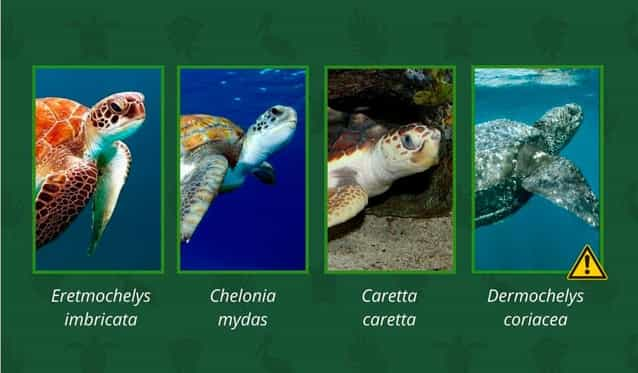
Of Contoy's 15 sandy beaches, 11 are used by turtles for nesting. The total extension is approximately 5 kilometers, and North Dunes Beach is the longest.
The eastern beaches are used by the green turtle (Chelonia Mydas), while the hawksbill turtle (Eretmochelys imbricata) is the only turtle that nests on all the beaches, both those located on the east and west sides.
Loggerhead turtles (Caretta caretta) tend to nest on the lower part of the beach, so their nests are exposed to flooding. Likewise, few hatchlings survive, putting this species at risk.
⚠️ Unfortunately, the leatherback turtle (Dermochelys coriacea) has not been seen on Isla Contoy in more than ten years.
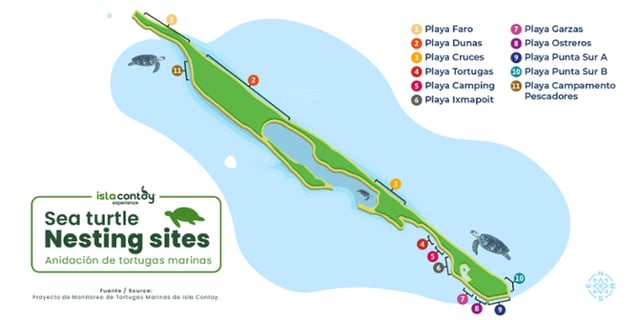
On October 29, 1986, Isla Contoy was declared a reserve zone and refuge site for the protection, conservation, repopulation, development, and control of the turtles nesting there.
In 1999, Isla Contoy was registered as a turtle camp with the Wildlife Directorate and later became the Center for the Protection and Conservation of Sea Turtles. Currently, the park is registered as a Management Plan for Non-extractive Use.
Turtle populations have generally remained stable and are slightly increasing for the three species still seen here.
The main threats that the turtles of Isla Contoy National Park face are:
We already know the threats, but Isla Contoy National Park also takes action to care for turtles. 👀 Let's take a look at some of them:
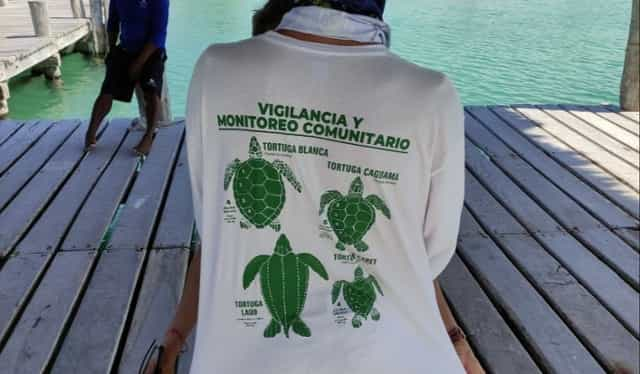
Nest protection: Contoy is an island with many bodies of water that flood seasonally, so nests must be protected against floods. If the water level is very high, the rangers must relocate the eggs.
Tagging of females: Place a tag on the female turtles to monitor their health, cycles, and trajectory.
Fishermen surveillance: Raise awareness among fishermen who work in the park so that if a sea turtle is captured in fish nets, they can be freed, and a proper record of those accidents can be kept.
Establish and respect rules for tourism boats. Not just any boat can enter Contoy, and those that do enter must have all their permits and follow anchoring protocols (such as turning off the propellers and the music) to avoid harming the fauna.
Protect sea turtle feeding areas within the park.
Promote the participation of researchers during the monitoring and publishing of the information generated.
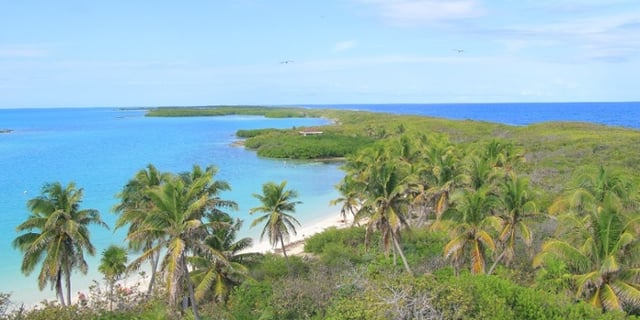
Isla Contoy is a destination full of magic and nature thanks to the many people, associations, government agencies, and companies contributing to its care.
If you travel to Contoy, remember to do it through authorized tours with valid permits from the authorities. These tours are regulated and provided by government-certified guides.
We invite you to be a responsible tourist and participate in ecotourism activities, respect the rules, and understand the importance of ecosystems as important as Isla Contoy.
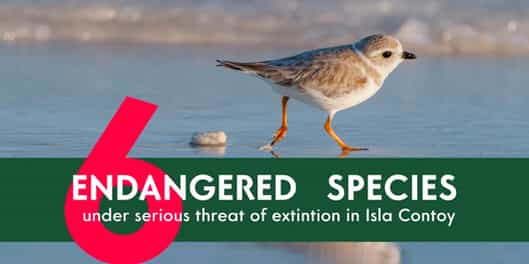
Although Contoy is a government-protected area, it is home to endangered species. Read on and learn about the 6 endangered species that inhabit Isla...
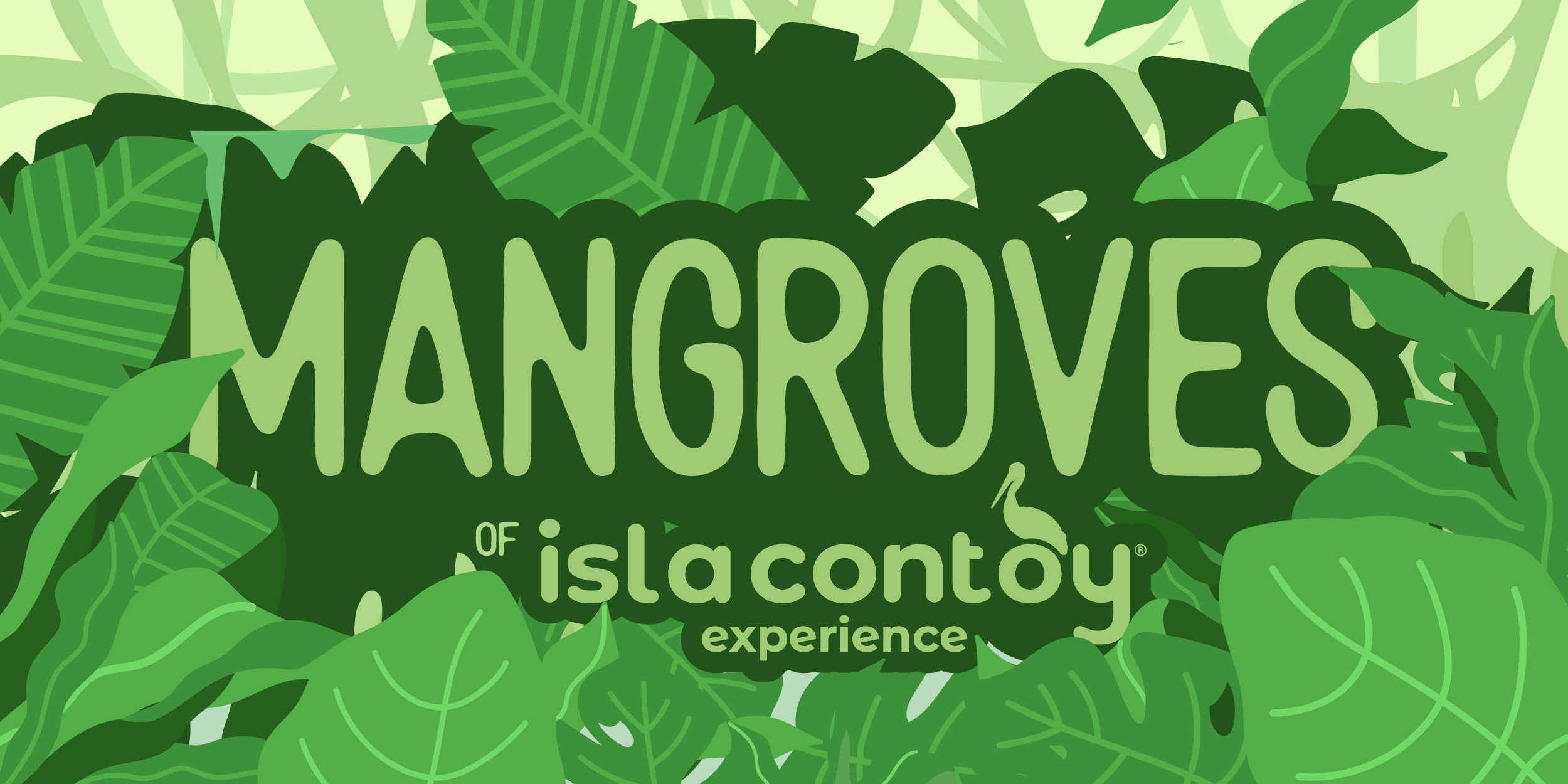
Did you know that the mangrove is a natural environment where marine and terrestrial species coexist? They are not only plants, but an ecosystem that...
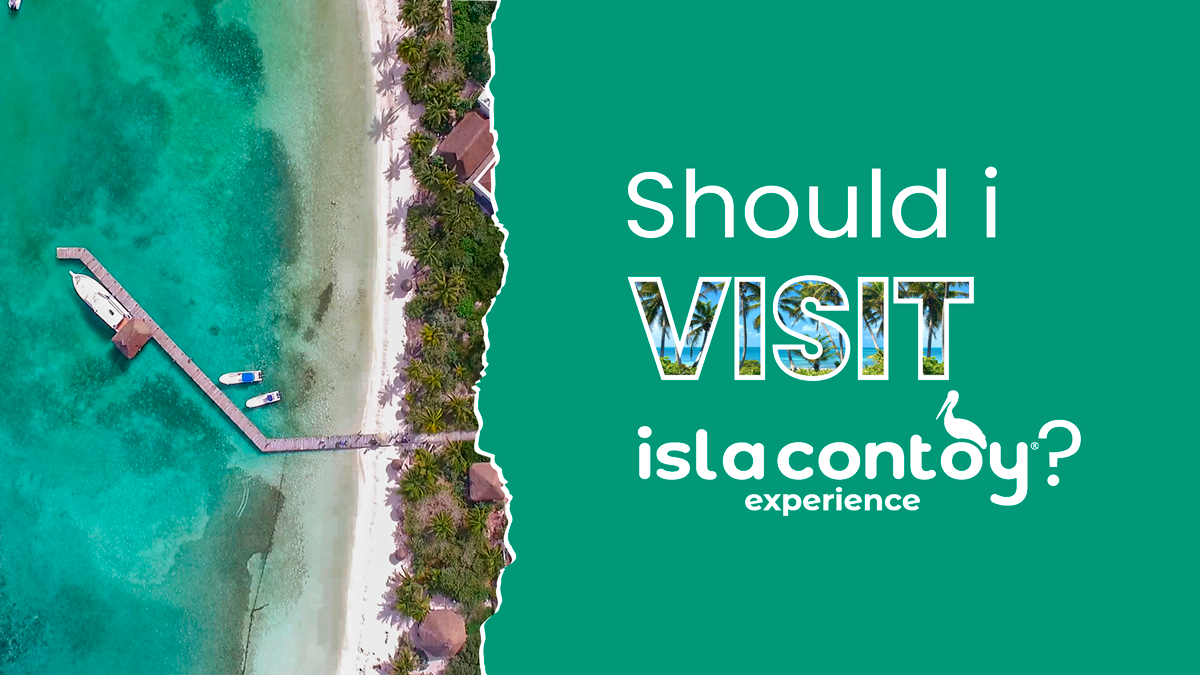
Are you still unsure about adding Isla Contoy to your Cancun itinerary? Consider this your invitation to add this stunning destination to your...